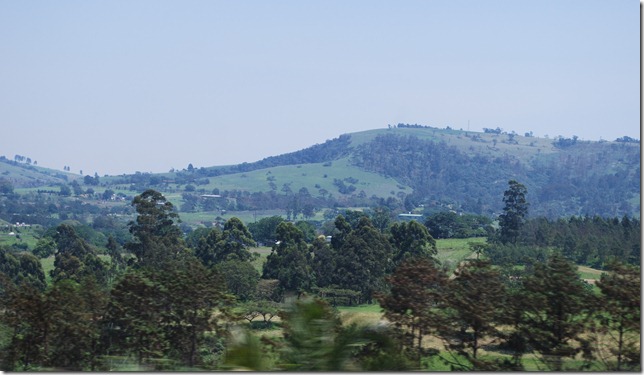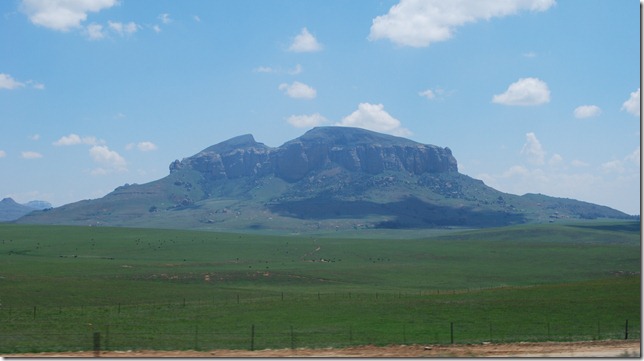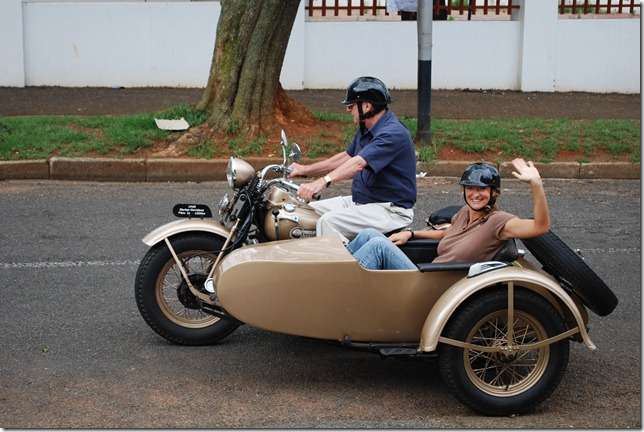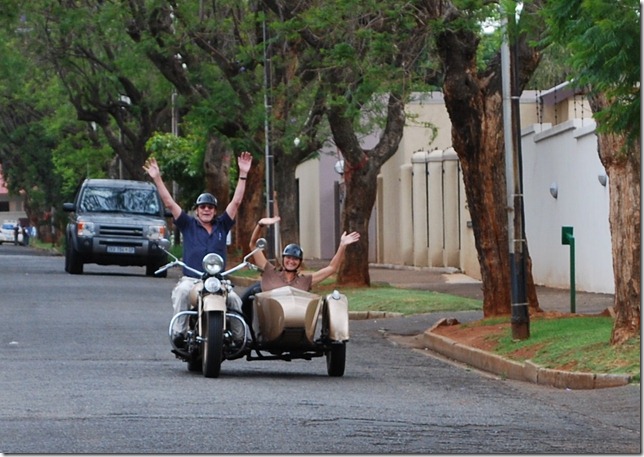Tuesday was another eventful day for us. In the morning I met again with the a local sail/canvas company owner who is going to be making some new trampolines for us. The old ones are getting to the point of being unsafe and prices are good here, so we’re taking advantage of the opportunity. It looks like we may also have some additional canvas-type work done here, which should have the boat looking a little better once we get back to the states. We have a pretty good sewing machine, but it takes a lot of effort and patience for amateurs like us to pull off a major project like a mainsail cover. In the afternoon we had the rigging inspected (I was a little concerned after the broken toggle incident in the Indian Ocean) and got a clean bill of health, which was a bit of a relief. Unfortunately, the lower roller furling bearings, which we’d replaced in New Zealand, rusted out not long after leaving New Zealand and we now need to replace them again. I’m hoping that it won’t be too bad, but dealing with the forestay and furler is never easy.
After so long at sea with almost no social interaction, we’ve wandered into Durban, where we can hardly walk down the dock without meeting someone. We struck up a conversation with a fellow cruising couple coming in by dinghy to get fuel, and after 5 minutes realized that we’d not only had similar experiences as far back as the Marquesas, but after exchanging names, we realized that Lauren and I had read a portion of their blogs fairly closely. They had covered essentially the same route to South Africa via northern Madagascar and Mayotte last year, so I had downloaded their blogs in New Zealand to help plan our route and to read on the Indian Ocean crossing.
Dinner was “Bunny Chow”, a Durban specialty that consists of a hollowed-out loaf of bread filled with a curry that is a must for anyone visiting Durban. Many Indians, including the famous Gandhi, came to South Africa as indentured servants to work the cane fields of Natal province, and Indian culture (both Hindu and Muslim) and food are prevalent here. In the evening we had drinks with another incredibly friendly South African named Dudley at the Point Yacht Club. We’d chatted with him earlier on the docks after noticing his catamaran, and we had a chance to get to know him better that evening. He and his wife had purchased a catamaran with plans to spend a portion of their retirement cruising, but after passages filled with horrible seasickness and a nasty bout of dysentery in Mozambique, he’s decided the sailing life isn’t for him and has put the boat up for sale while contemplating his next move. He’s an airplane mechanic and pilot who has spent a fair amount of time flying for the UN and Red Cross in places like Pakistan/Afghanistan (back when the CIA was working with the Taliban), Congo, Sudan, etc. His stories were something else, and we enjoyed talking over a range of topics. When we finally left the club, it was off to make a late appearance at a Christmas party on one of the ARC boats that finally wrapped up for us well after midnight. So much for taking it easy on land.
We were up early on Wednesday to pack. We’d decided to take Brian and Monica up on their offer to come home with them to Johannesburg and then on to Kruger Park for game watching this weekend. Needless to say, we were pretty excited at the chance to see more of the country, get a local introduction to Johannesburg, and go game watching in South Africa’s largest game park. Their hospitality has really been incredible. I’m half Brian’s age, but his energy level has me feeling like it’s the other way around. The drive back to Jo’burg, as it’s called, gave us a chance to see the valley of a thousand hills in Natal, the Drakensberg mountains in the distance, the expansive plateau plains of the Free State, and of course Jo’burg in Gauteng Province. I have to say that the two biggest impressions I had were how beautiful parts of the drive were and how “first-world” the vast majority of sights were. There are exceptions of course, like the slums of shacks at the city’s edge, the small, rough wooden shacks of Zimbabwean immigrant laborers across the highway from a wood processing plant, crowded but clean and orderly government-funded low income housing developments with houses less than half the size of the smallest houses in the US, and the ubiquitous parking lot “car-watchers” working for tips. None of the drive passed through the former “homeland” areas (sort of like US Indian reservations), where under apartheid blacks were forced to live and pursue at least quasi independence in the hopes that whites could one day keep the non-homeland areas as a separate, white South Africa. I was guessing that those areas wouldn’t appear as well developed, but most of what we saw was remarkably similar to a cross-country drive in the US, complete with fast-food complexes beside major gas stations.
 The valley of a thousand hills was filled with scenes like this one
The valley of a thousand hills was filled with scenes like this one
 The vistas in the Free State featured large areas of farm and grazing land surrounded by distant hills and mountains
The vistas in the Free State featured large areas of farm and grazing land surrounded by distant hills and mountains
We’re leaving for Kruger Park early tomorrow, but in the short time we’ve been here we’ve managed to fit in some wonderful meals, a chance to watch the Hough’s talented granddaughter sing at a local restaurant, a shopping trip for road trip provisions, a ride in Brian’s 1942 Harley Davidson with sidecar, website and email catch-up, and a sample or two from the well-stocked wine cellar.
 We may have to consider travelling like this when we get back to the states
We may have to consider travelling like this when we get back to the states
 We’re not kidding when we say we’ve been having fun
We’re not kidding when we say we’ve been having fun
South Africa’s present and future are so tied to both its own history and the history of its neighbors that one can seemingly have a good conversation with almost anyone about past, present, and future. Race is also anything but the elephant in the room. Being so integral to the South African milieu, race is something that’s often discussed and joked about openly not only in white-only or black-only settings, but in mixed settings and between blacks and whites. At first it’s all a bit overwhelming in how different it is from anything we’ve experienced before, but before long, you begin to see that people grow accustomed to it. Crime is always a topic, but people get used to the risk and impacts on their daily lives. The “growing pains” that are very much a part of a new country, especially an African one, have been cause for some to leave South Africa, but seem to be taken in stride by many of those that have not.
This evening we had a chance to meet the black deputy editor of a local newspaper who came over to say hello and have a drink before heading back to the office (it’s been a while since I’ve headed back to the office after dinner). After discussing a local fraud, corruption, and murder case that included the Chief of Police but resulted in far fewer convictions than it should have, he shook his head and said, “Yes, but life goes on.” It’s a phrase I’ve heard a lot, but I don’t think I’ve ever heard it said quite that way, by someone who realizes how disappointing and indicative an event is, has seen it many times before, but still retains a belief that things are moving forward. He’s obviously a very intelligent and well-informed individual, and it was nice to see his optimism, even if it was measured. In yesterday’s paper there’s an article about how a government audit found that the head of the social equality department had used a pretty sizeable amount of government funds for personal use. Significant press freedoms were written into the new constitution and the press has uncovered a fair amount of corruption and incompetence, delivering scathing articles that now have the government pushing for laws giving it the ability to restrict the press. It’s a strange turn-about that local political cartoonists are having a field day with, and it’s being vigorously opposed. We’re certainly still in the process of forming our own opinions about South Africa, but I can definitely say that boring and dull are out of the running.

